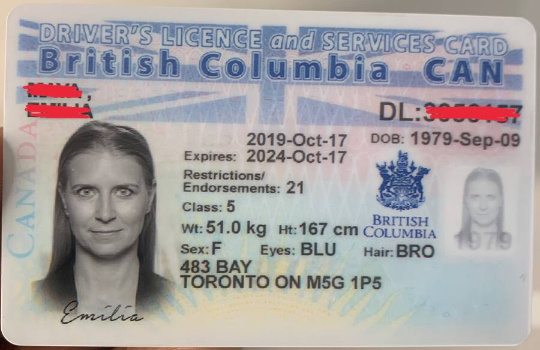The fact is that the crash rate for 16-year-old drivers is 15 times that of those with 4 to 8 years of more driving experience. For this reason, the National Highway Traffic Safety Administration (NHTSA) and American Association of Motor Vehicle Administrators (AAMVA) developed a graduated driver’s BRITISH COLUMBIA FAKE DRIVERS LICENCE system.
Graduated licensing is a system that consists of three stages wherein young drivers must meet certain expectations before graduating to the next stage. The purpose of putting young drivers through a staging process is to ensure they are eased into difficult driving situations slowly, as their experience and maturity grow. From a learning permit to full licensure, the teen driver is moved progressively to each stage as they demonstrate responsible driving behavior. The components and requirements of each licensing stage are determined separately by each state. Not all states have graduated licensing laws, and some that do only have two stages in their system. Florida is one of 13 states that currently has a three-stage graduated licensing system.
Florida’s Graduated Driver’s License program became law in July 1996, and in 1997 alone, Florida saw a 9% reduction in fatalities and injury crashes for teen drivers between 15- and 17-years-old. Thus, the benefits of Florida’s GDL program are obvious. The holder of a Learner’s License may not drive alone, regardless of age, and if under 18, must hold the license for 12 months before advancing to the next stage. The driver is restricted from driving after dark for the first three months, and after 10 p.m. from months 4-12.
Drivers with an Operator’s License, who are 16-years-old, may only drive between the hours of 6 a.m. and 11 p.m., with two exceptions. If the driver is going to and from work, or has a licensed driver who at least 21-years-old in the front passenger seat, he or she may driver outside the restricted times. Drivers with an Operator’s License, who are 17-years-old, are restricted from driving between 1 a.m. and 5 a.m., with the two exceptions listed above. The Full License is the end goal for young drivers. Once a driver reaches age 18, they may apply for a Full License. For those already holding an Operational License, the driving restrictions will merely fall off. No new testing will need to be completed.



